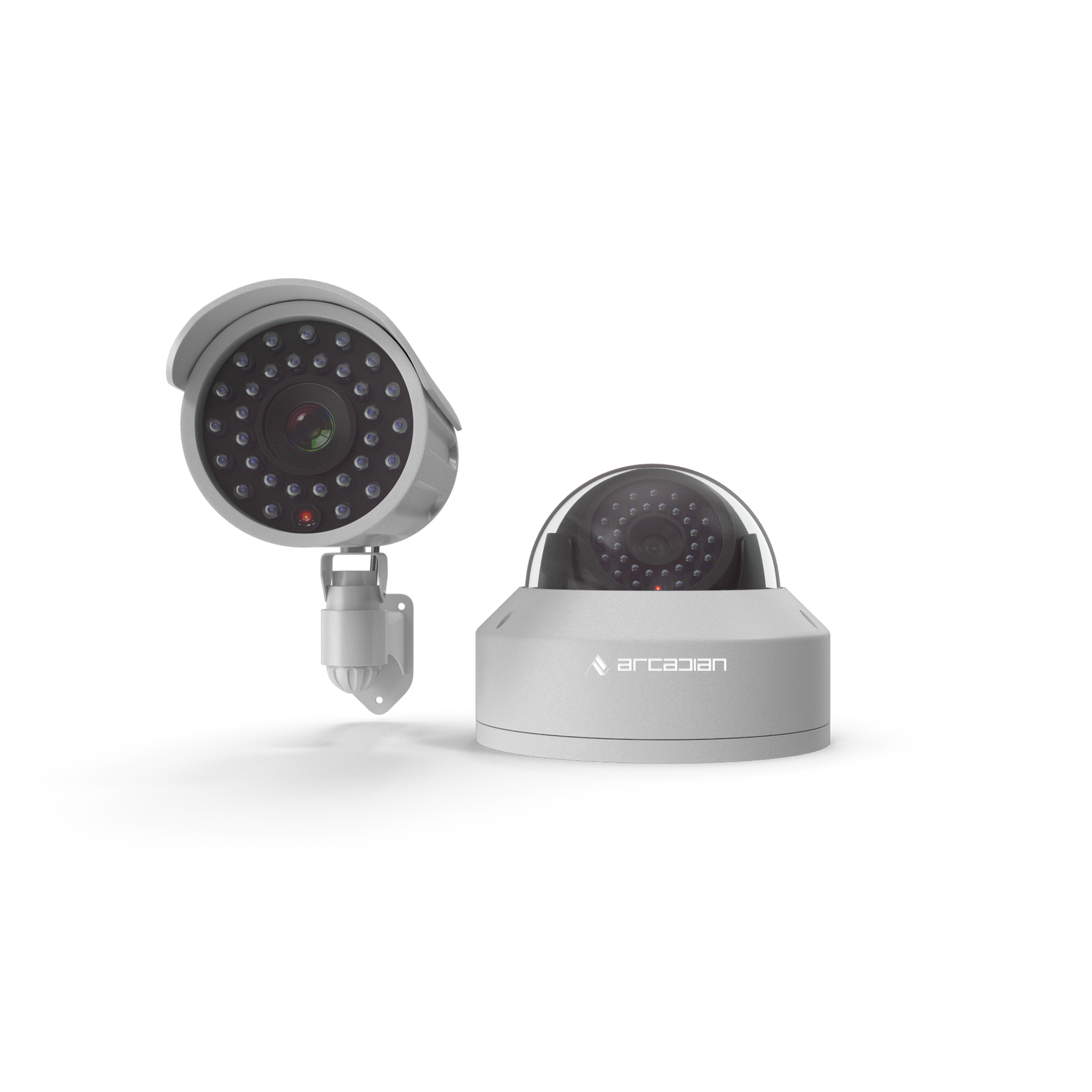The Chip War and the Future of AI: How Semiconductors Decide Who Wins Tomorrow
From NVIDIA to Huawei, from TSMC to Washington, the global Chip War is the defining struggle of our century. Whoever controls semiconductors controls AI, economies, and security.

Introduction
In 2024, global semiconductor sales reached $595 billion (Statista), yet the number that matters isn’t revenue — it’s power. Chips now define who wins in AI, defense, surveillance, and even democracy.
The U.S. government calls chips “the ground zero of the AI revolution.” China calls them “the rice of industry.” NVIDIA became the fastest-growing trillion-dollar company in history. Meanwhile, Huawei shocked the world by releasing a 7nm chip despite U.S. sanctions.
This is the Chip War — a high-stakes battle between nations, corporations, and technologies. And it’s not just abstract geopolitics. It affects every retail store trying to stop shoplifting, every airport running surveillance, every logistics hub moving goods. Without GPUs, ArcadianAI’s Ranger couldn’t process real-time video to stop organized retail crime.
Yet competitors like Verkada, Genetec, and Eagle Eye Networks still ship closed systems tied to fragile supply chains, making their customers collateral damage in the chip war.
In this 10,000+ word deep dive, we’ll explore:
-
The global fight over semiconductors.
-
How the U.S., China, Taiwan, and others shape the battlefield.
-
The corporations — NVIDIA, AMD, Intel, Huawei, Samsung, TSMC, ASML — and their revenues, struggles, and strategies.
-
The laws (CHIPS Act, EU Chips Act, sanctions) that rewire supply chains.
-
How AI, security, and surveillance are directly impacted.
-
Why ArcadianAI thrives in chaos by staying hardware-agnostic.
Quick Summary / Key Takeaways
-
Chips are the new oil of global power.
-
The U.S. and allies control design and tools; China controls demand.
-
NVIDIA dominates AI compute; Huawei and SMIC fight to catch up.
-
Taiwan’s TSMC is the world’s biggest chokepoint.
-
ArcadianAI avoids lock-in, staying resilient in chip shortages.
Background & Relevance
-
80% of AI accelerators are NVIDIA GPUs (JPR, 2024).
-
90% of the world’s advanced chips are made by TSMC in Taiwan.
-
The U.S. CHIPS Act ($52B) and EU Chips Act ($47B) aim to reshore production.
-
China’s Big Fund III ($47.5B) fuels state-backed chip firms.
-
The AI market will exceed $1.3 trillion by 2030 (McKinsey), but only if chips can keep up.
This war isn’t optional. If you’re a retailer, a logistics operator, or a government, your AI-powered systems are chained to this battlefield.
Core Topic Exploration
What Is the Chip War?
The Chip War is the geopolitical, corporate, and technological battle to dominate semiconductors.
-
Countries: U.S., China, Taiwan, South Korea, Japan, EU.
-
Corporations: NVIDIA, AMD, Intel, TSMC, Samsung, ASML, Huawei, SMIC.
-
Why? Chips power AI, military, communications, finance, healthcare, and surveillance.
-
Weapons: Export bans, subsidies, espionage, alliances, and supply chain chokeholds.
The U.S. Strategy: Starve China, Subsidize Itself
The U.S. government views semiconductors as national security.
-
Export Controls (2022–2025): Banned NVIDIA A100/H100/Blackwell to China.
-
CHIPS Act (2022): $52B subsidies for Intel, TSMC Arizona, Samsung Texas.
-
Alliances: With Japan, Netherlands, South Korea to block ASML EUV machines from China.
-
Military: Pentagon invests in DARPA “Next-Gen Microelectronics” to ensure AI edge.
📊 Fact: By 2025, the U.S. produces only 12% of global chips, down from 37% in 1990.
China’s Counterattack: Build or Break
China consumes 60% of global chips, but produces <20%.
-
SMIC: Fabricated 7nm chips in 2023 despite sanctions.
-
Huawei Mate 60 Pro: Shocked world with 7nm processor.
-
Big Fund III (2023): ¥344 billion ($47.5B) to fund fabs and design firms.
-
Military Goal: Achieve chip independence by 2030.
📊 Fact: China imported $478B in semiconductors in 2023, more than oil.
Taiwan: The Silicon Shield
-
TSMC: Makes >90% of advanced chips, including for NVIDIA, Apple, AMD.
-
Strategic Role: The “Silicon Shield” deters invasion because the world depends on TSMC.
-
Arizona Fab: TSMC invests $40B in U.S. fabs, but production delays persist.
📊 Fact: A war in Taiwan could wipe $1 trillion off global GDP in a single year (Bloomberg).
South Korea & Samsung: The Challenger
-
Samsung Electronics: Invests $230B in fabs through 2042.
-
Strength: 3nm foundry competition with TSMC.
-
Weakness: Relies on U.S. tech tools and market.
Europe & ASML: The Quiet Power
-
ASML (Netherlands): Monopoly on EUV machines ($200M each).
-
Japan: Supplies 30% of key chip materials (photoresists, wafers, chemicals).
-
EU Chips Act (2023): $47B subsidies to build resilience.
The Corporate Battlefield
NVIDIA
-
Market Cap: $2.5 trillion (2024).
-
AI Dominance: >80% share of AI GPUs.
-
Flagship Chips: H100, Blackwell (B100).
-
Revenue: $60.9B in FY2024, up 126% YoY.
AMD
-
AI Challenger: MI300 series targeting datacenters.
-
Strength: x86 + GPU + FPGA ecosystem.
-
Revenue: $23.6B (2024).
Intel
-
Struggles: Delays on 7nm.
-
Pivot: Intel Foundry Services to rival TSMC.
-
Revenue: $54.2B (2024).
Huawei
-
Resilience: Mate 60 Pro proves sanctions can be bypassed.
-
AI Chips: Ascend series for datacenters.
-
Revenue: $99.9B (2023).
SMIC
-
China’s Top Foundry: Produces 7nm under restrictions.
-
Weakness: Lacks EUV tools.
Samsung
-
Foundry Rival to TSMC: Competing at 3nm.
-
Revenue: $212B (2024).
Military Applications: Chips as Weapons
-
U.S. DoD: AI drones, missile guidance, cyber defense.
-
China PLA: Surveillance AI, hypersonic missile compute, space assets.
-
Russia: Sanctioned, sourcing chips through smuggling.
📊 RAND Report: AI military spending will reach $100B annually by 2030.
AI, Surveillance & Security Impact
-
AI Needs Compute: Object detection, facial recognition, forensic search.
-
False Alarms: Old NVR/VMS systems can’t scale.
-
ArcadianAI Advantage: Hardware-agnostic; runs on whatever compute is available.
-
Competitor Weakness: Verkada & Genetec lock customers into hardware, vulnerable to shortages.
Comparisons & Use Cases
Table: U.S. vs China in the Chip War (2025)
| Category | United States | China |
|---|---|---|
| AI GPUs | NVIDIA H100, Blackwell | Huawei Ascend, Biren Tech |
| Funding | $52B (CHIPS Act) + private billions | $47.5B Big Fund III |
| Strengths | Design, software, alliances | Scale, subsidies, state-driven focus |
| Weaknesses | Slow fab construction | No EUV, sanctions chokeholds |
Table: ArcadianAI vs Competitors
| Feature | ArcadianAI (Ranger) | Verkada | Genetec | Eagle Eye Networks |
|---|---|---|---|---|
| Hardware Lock-In | None (camera-agnostic) | High | Medium | Medium |
| Cloud-Native AI | Yes | Partial | Limited | Yes |
| Resiliency to Chip War | High (agnostic architecture) | Low | Medium | Medium |
| ROI | Proven shrink reduction | Tied to hardware | Complex licensing | Subscription-heavy |
Common Questions (FAQ)
Q1: What is the Chip War?
A geopolitical and economic struggle for semiconductor supremacy.
Q2: Why does AI depend on chips?
AI workloads require GPUs/accelerators for speed and efficiency.
Q3: Who controls the most advanced fabs?
TSMC in Taiwan, followed by Samsung in Korea.
Q4: Can China catch up without EUV?
Not at scale; workarounds exist but costly.
Q5: How does ArcadianAI survive shortages?
By being hardware-agnostic, flexible between cloud and edge.
Conclusion & CTA
The Chip War is not about bits and silicon — it’s about power. It’s about who controls the future of AI, security, economies, and even freedom.
For businesses, governments, and retailers, ignoring the chip war is like ignoring oxygen. Your AI systems depend on it.
ArcadianAI is built for this era. While competitors tie customers to fragile supply chains, we built Ranger to adapt. In the fog of the chip war, adaptability is survival.
Security Glossary (2025 Edition)
-
AI Accelerators — Specialized chips (GPUs, TPUs, NPUs) that run AI workloads faster than CPUs.
-
ASML — Dutch company with a monopoly on EUV lithography machines.
-
CHIPS Act — 2022 U.S. law providing $52B for domestic fabs.
-
EUV Lithography — Extreme ultraviolet light tech for <5nm chips.
-
Foundry — A company that manufactures chips for others (e.g., TSMC, Samsung).
-
GPU — Graphics Processing Unit, essential for AI.
-
Huawei Ascend — China’s AI chip line.
-
NVIDIA Blackwell — Next-gen GPU powering 2025 AI workloads.
-
SMIC — China’s top foundry, limited by sanctions.
-
TSMC — Taiwan Semiconductor Manufacturing Company, global leader.
-
VSaaS — Video Surveillance as a Service, cloud-based monitoring reliant on chips.

Security is like insurance—until you need it, you don’t think about it.
But when something goes wrong? Break-ins, theft, liability claims—suddenly, it’s all you think about.
ArcadianAI upgrades your security to the AI era—no new hardware, no sky-high costs, just smart protection that works.
→ Stop security incidents before they happen
→ Cut security costs without cutting corners
→ Run your business without the worry
Because the best security isn’t reactive—it’s proactive.







